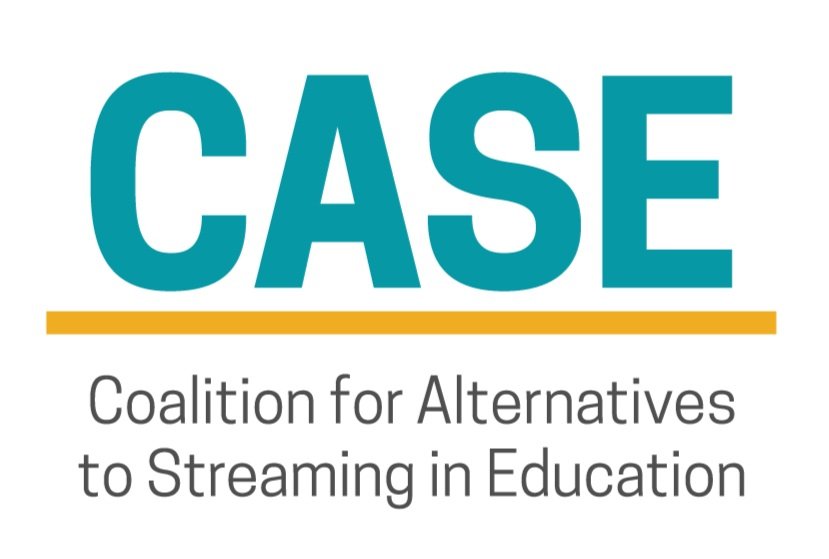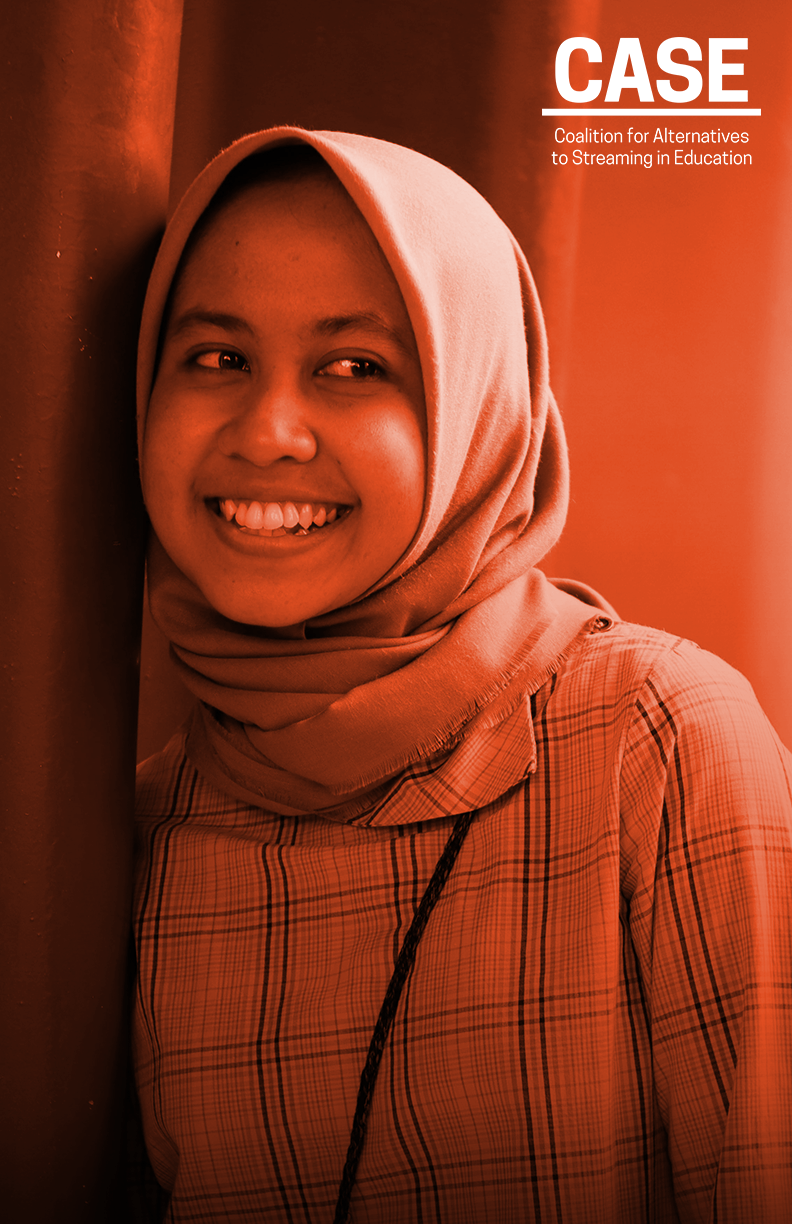
Research
It is long past time to make evidence-based, provincial-level change to academic streaming in Ontario.
The research on streaming is clear: Black, Indigenous, racialized, low-income and special needs students are significantly more likely to be streamed into applied or locally developed classes which lead to worse learning outcomes and postsecondary options than those of their academic peers.
We have collected research from leading academics, scholars and organizations working to end streaming, as well as our own original reports.
The Power of Connected Data: Charting Student Pathways to and through Postsecondary in Hamilton
"We found predictors of educational achievement to be closely tied to other demographic factors like neighbourhood income, secondary stream and exceptionality." … “Our analysis aligns with prior research out of the TDSB about the effects of streaming, suggesting students in non-academic courses are less likely to graduate high school or attend postsecondary than their peers in academic courses (Pichette et al., 2020).”
Higher Education Quality Council of Ontario (2022)
Update on TDSB's Academic Pathways Initiative
"While the Academic Pathway has expanded in participation increasing by more than 10%, the pass rates have not fallen at all."
Toronto District School Board (2022)
How to End Streaming in Ontario Schools
”Students’ educational attainment help predict several life outcomes, such as employment opportunities, income, social mobility, as well as housing and food security. As such, advancing equity through the education system must be a steadfast goal for policymakers committed to giving every child a chance to reach their full potential.”
Tianna Thompson (Follwell) & Sam Andrey, Ontario 360 (2021)
Destreaming in Ontario high schools should be expanded to all core subjects in Grades 9 and 10
“The board’s research has shown that students in applied courses are less likely to graduate from high school than students in academic courses (Brown & Tam, 2017a). Of students who entered Grade 9 in 2006, 88% of those in academic programs graduated from high school by 2011 compared with 59% of those in applied courses; of students who entered Grade 9 in 2011, 93% of those in the academic stream graduated on time compared with 69% in the applied stream (Robson et al., 2019).”
Higher Education Quality Council of Ontario (2020)
Changing Lanes: The Relationship Between Special Education Placement and Students’ Academic Futures
“The practice of segregating students into low-ability groups appears to be directly correlated with exclusion from academic programming in high school. Placement in an HSP [High School Program] appears to affect students’ future academic opportunities and ensures almost direct placement into non-academic programming at the secondary level, regardless of student achievement [on provincial testing]. Second, when compared with students who are similarly identified and taught in the regular class, students placed in HSPs are more likely to be racialized, more likely to come from lower income families, and more likely to have parents who have not had access to postsecondary education.
York University (2019)
Implementation of Academic Pathways
“The Pathway data tell an encouraging and positive story of a trend in students moving from the Applied programs to the Academic programs. This movement is currently occurring at a very rapid pace in which students in the Applied program have decreased by 50%… Significant shifts have occurred in the number of students coming from historically underserved groups within the Academic programs.”
Toronto District School Board (2019)
Roadmaps and roadblocks: Career and life planning, guidance, and streaming in Ontario’s schools
“Adolescence is a time of significant change. As students develop and explore alternatives, schools sometimes lack flexibility to support them when they change direction or realize that their new plans require them to take courses with prerequisites that didn’t seem important in grade 8 or 9.”
People for Education (2019)
TDSB Multi-Year Strategic Plan
“The current streaming structure under academic, applied, and essentials has led to inequitable outcomes, particularly for students from marginalized, underserved groups. In some cases, it also has the potential of limiting post-secondary pathways.”
Toronto District School Board (2018)
Learning Skills, System Equity, and Implicit Bias Within Ontario, Canada
"When measured against achievement, students identified as male, racialized, disabled, or students experiencing other sociodemographic disadvantage may perform well academically, but are significantly less likely to be perceived as “Excellent” learners as compared with students identified as female, White, non-disabled, or students living in socio-demographically privileged contexts. These stark outcomes raise questions around the subjectivity of the assessment of Learning Skills, the influence of teachers’ positionally, and the implicit bias within public schooling."
Toronto District School Board (2018)
Towards Race Equity in Education: The Schooling of Black Students in the Greater Toronto Area
“53% of [TDSB] Black students, 81% of White, and 80% of other racialized students were in the Academic program of study. Conversely, Black students were over twice as likely to be enrolled in the Applied program (39% compared with 16% of White and 18% of other racialized students) and three times as likely to be in the Essentials program (9% versus 3% of White and other racialized students).”
York University (2017)
Still Streamed: How High Impact Decisions Are Shaping Students’ Futures
“Facilitate and resource de-streaming efforts, including expanding successful pilots that have raised student achievement levels and increased success for students from marginalized and low-income communities.”
Social Planning Toronto (2017)
Ontario’s Education Equity Action Plan
“Ontario is the only province in Canada that separates students into academic and applied courses in Grade 9, with most provinces beginning course selection in Grade 10.
Graduation Rate for Students Enrolled in Grade 9 Math and Language Courses:
Applied: 74%
Academic: 95%
University Registration for Students Enrolled in Grade 9 Math and Language Courses:
Applied: 3%
Academic: 54%”
Ministry of Education (2017)
“Although the notion of streaming in Ontario is often discussed in the secondary school context, it is pertinent to recognize that streaming whether intentional or unintentional, explicit or implicit, has its origins in elementary school. This early streaming practice can determine the rest of students' educational trajectory, which may in turn impact their career paths.”
“There is also a large discrepancy between academic and applied streams in postsecondary application and acceptance rates... 30% of the Peel students from the applied stream apply to college, and 30% of the applied students in Ontario obtain college acceptance.”
Peel District School Board (2017)
“Most findings strongly suggest that our current system of academic streaming is highly inequitable, particularly due to the influence of socioeconomic status, race, and level of parental advocacy on which stream a student takes. This study strongly suggests that academic streaming is largely detrimental since it segregates students and puts many ‘on a pathway…that closes a lot of doors.’ Another significant finding is that participants were keen to increase student integration using approaches such as destreaming.”
Ontario Institute for Studies in Education of the University of Toronto (2016)
Restacking the Deck: Streaming by class, race and gender in Ontario schools
“Streaming continues to exist throughout Ontario, with devastating consequences for many socially disadvantaged children. Children from working-class and some minority families continue to be pejoratively labelled with exceptionalities and special needs in elementary school, streamed into dead-end programs that encourage many of them to drop out of secondary school, and excluded from post-secondary education.”
Our Schools/Our Selves (2014)
Achievement gaps, informed decision-making, and inequality
“But data from the Ministry of Education show that Ontario’s de-streaming may be in name only. The majority of students who take Grade 9 applied math take the majority of their core subjects in applied. Just 10% of students take only applied math and no other applied courses. Very few students transfer from applied to academic courses.”
“The province does not provide any formal selection criteria for recommending enrolment in applied or academic courses, and schools’ involvement in course selection varies widely across Ontario. Two-thirds (67%) of schools with grade 8 report their school has criteria that they use to advise students and their families about whether to select applied or academic courses.”
People for Education (2014)
“Students who are enrolled in the Academic Program of Study are more likely to come from higher income households than students in both the Applied and Essentials Programs of Study.”
“Self-identified Aboriginal students are notably under-represented in the Academic POS (0.1%), more than doubly represented in the Applied POS (0.7%), and have quadrupled representation in the Essentials POS (1.2%).”
Toronto District School Board (2013)
“Early student selection has a negative impact on students assigned to lower tracks, without raising the performance of the whole student population. In addition, selection exacerbates inequities since students from disadvantaged backgrounds are more likely to be placed in the least academically oriented tracks or groups. Equity enhancing policies should … delay early tracking, deferring student selection to upper secondary education through comprehensive schooling.”
OECD (2012)
Who Doesn’t Go To Post-Secondary Education?
“OSSD completion and subsequent [post-secondary] enrollment are far more likely for those who took Academic English or Mathematics in Grade 9, and far less likely for those who took Applied or Locally Developed English or Mathematics in Grade 9.”
Colleges Ontario (2009)
Tracking of Grade 9 and 10 Students in the Toronto Board
“The results of the [1993 destreamed] curriculum changes were moderately positive. The numbers of dropouts and out-of-Board transfers declined slightly compared to the other cohorts; grade 9 absenteeism fell slightly; the dropout rate fell across all absenteeism categories except for those viewed as ‘highly at risk’; and, compared to the two previous cohorts, the destreamed students had higher credit accumulations in grade 9 and similar credit accumulations in grade 10.”
Toronto Board of Education (1995)










![Towards Race Equity in Education: The Schooling of Black Students in the Greater Toronto Area“53% of [TDSB] Black students, 81% of White, and 80% of other racialized students were in the Academic program of study. Conversely, Black students were ove…](https://images.squarespace-cdn.com/content/v1/5ee2aedfd4916c68b6bb2c26/1592951853629-SKI4XPN981ZE77ZSCACI/Poster+4.png)






